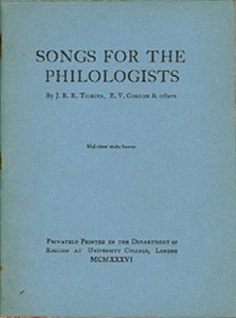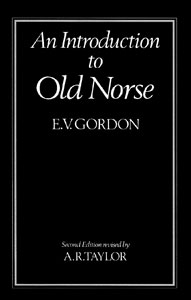Related Research Articles
Sagas are prose stories and histories, composed in Iceland and to a lesser extent elsewhere in Scandinavia.

Eric Rücker Eddison, CB, CMG was an English civil servant and author, writing epic fantasy novels under the name E. R. Eddison. His best-known works include The Worm Ouroboros (1922) and the Zimiamvian Trilogy (1935–1958).

Thomas Alan Shippey is a British medievalist, a retired scholar of Middle and Old English literature as well as of modern fantasy and science fiction. He is considered one of the world's leading academic experts on the works of J. R. R. Tolkien about whom he has written several books and many scholarly papers. His book The Road to Middle-Earth has been called "the single best thing written on Tolkien".

Troilus and Criseyde is an epic poem by Geoffrey Chaucer which re-tells in Middle English the tragic story of the lovers Troilus and Criseyde set against a backdrop of war during the siege of Troy. It was written in rime royale and probably completed during the mid-1380s. Many Chaucer scholars regard it as the poet's finest work. As a finished long poem, it is more self-contained than the better known but ultimately unfinished The Canterbury Tales. This poem is often considered the source of the phrase: "all good things must come to an end" (3.615).

Songs for the Philologists is a collection of poems by E. V. Gordon and J. R. R. Tolkien as well as traditional songs. It is the rarest and most difficult to find Tolkien-related book. Originally a collection of typescripts compiled by Gordon in 1921–1926 for the students of the University of Leeds, it was given by A. H. Smith of University College London, a former student at Leeds, to a group of students to be printed privately in 1935 or 1936, and printed in 1936 with the impressum "Printed by G. Tillotson, A. H. Smith, B. Pattison and other members of the English Department, University College, London."
Eric Valentine Gordon was a Canadian philologist, known as an editor of medieval Germanic texts and a teacher of medieval Germanic languages at the University of Leeds and the University of Manchester.
Wade is the English name for a common Germanic mythological character who, depending on location, is also known as Vadi (Norse) and Wate.
"Bagmē Blōma" by J. R. R. Tolkien is a poem in the 1936 Songs for the Philologists, and the only one ever written in the Gothic language. It was to be sung to the tune of "O Lazy Sheep!". Scholars have found the poem beautiful, and have debated its interpretation. Tom Shippey proposed that the Birch tree, praised in the poem, symbolises the 'B' scheme of English teaching, namely Tolkien's own subject, philology. Verlyn Flieger doubted the connection, writing that the Birch played a significant emotional role in Smith of Wootton Major, as in the poem, and that this was only diminished by seeking a further interpretation.
In Germanic mythology, Myrkviðr is the name of several European forests.

Skjöldr was among the first legendary Danish kings. He is mentioned in the Prose Edda, in Ynglinga saga, in Chronicon Lethrense, in Sven Aggesen's history, in Arngrímur Jónsson's Latin abstract of the lost Skjöldunga saga and in Saxo Grammaticus' Gesta Danorum. He also appears in the Old English poem Beowulf. The various accounts have little in common.

An Introduction to Old Norse is a textbook written by E. V. Gordon, arising from his teaching at the University of Leeds and first published in 1927 in Oxford at The Clarendon Press. The Second Edition was revised (1957) by A. R. Taylor, Gordon's former student and, indirectly, his Leeds successor. It was most recently reprinted in 1990 by the Oxford University Press. According to Todd Krause of the Linguistics Research Centre at the University of Texas, the work is "still considered the standard reference, though often extremely daunting for self-study."

Edward Oswald Gabriel Turville-Petre was an English philologist who specialized in Old Norse studies.

Le Roman de Troie by Benoît de Sainte-Maure, probably written between 1155 and 1160, is a 30,000-line epic poem, a medieval retelling of the theme of the Trojan War. It inspired a body of literature in the genre called the roman antique, loosely assembled by the poet Jean Bodel as the Matter of Rome. The Trojan subject itself, for which de Sainte-Maure provided an impetus, is referred to as the Matter of Troy.
Albert Hugh Smith OBE was a scholar of Old English and Scandinavian languages and played a major part in the study and publication of English place-names.
The Viking Club was a club for philologists and historians specializing in Germanic and Scandinavian studies.

The Story of Sigurd the Volsung and the Fall of the Niblungs (1876) is an epic poem of over 10,000 lines by William Morris that tells the tragic story, drawn from the Volsunga Saga and the Elder Edda, of the Norse hero Sigmund, his son Sigurd and Sigurd's wife Gudrun. It sprang from a fascination with the Volsung legend that extended back twenty years to the author's youth, and had already resulted in several other literary and scholarly treatments of the story. It was Morris's own favorite of his poems, and was enthusiastically praised both by contemporary critics and by such figures as T. E. Lawrence and George Bernard Shaw. In recent years it has been rated very highly by many William Morris scholars, but has never succeeded in finding a wide readership on account of its great length and archaic diction. It has been seen as an influence on such fantasy writers as Andrew Lang. The Story of Sigurd is available in modern reprints, both in its original form and in a cut-down version, but there is no critical edition.
Ursula Miriam Dronke was an English medievalist and former Vigfússon Reader in Old Norse at the University of Oxford and an Emeritus Fellow of Linacre College. She also taught at the University of Munich and in the Faculty of Modern and Medieval Languages at Cambridge University.
Arnold Rodgers Taylor (1913–1993) was a scholar of medieval English, Old Norse, and modern Icelandic.

Andrew Nicholas Wawn is emeritus professor of Anglo-Icelandic literature at the University of Leeds and an expert on Old Norse sagas and their reception in the modern era.

Paul Emile Auguste Barbier (1873–1947) was Professor of French at the University of Leeds 1903–38; he is noted for his work on French lexicography and his promotion of Celtic Studies.
References
- ↑ "J.R.R. Tolkien Reader's Guide Addenda and Corrigenda". Hammondandscull.com. Retrieved 9 March 2016.
- ↑ "Leeds University Library /All Locations". Lib.leeds.ac.uk. 12 April 2010. Retrieved 9 March 2016.
- ↑ Leeds, Brotherton Library, Tolkien-Gordon Collection, MS 1952/2/16.
- ↑ Bridget Mackenzie, 'Corrienessan', Ambaile: Highland History & Culture: http://www.ambaile.org.uk/detail/en/1268/1/EN1268-corrienessan.htm.
- ↑ Leeds, Brotherton Library, Tolkien-Gordon Collection, MS 1952/2/16.
- ↑ Unless otherwise stated, information in this entry derives from Douglas A. Anderson, ' "An Industrious Little Devil": E. V. Gordon as Friend and Collaborator with Tolkien', in Tolkien the Medievalist, ed. by Jane Chance, Routledge Studies in Medieval Religion and Culture, 3 (New York: Routledge, 2003), pp. 15-25. ISBN 0-415-28944-0.
- ↑ "Tolkien-Gordon Collection - Leeds University Library". Library.leeds.ac.uk. Retrieved 9 March 2016.
- ↑ Gordon Collection Archived 16 April 2016 at the Wayback Machine .